Using their noses
Dogs can be trained to sniff out everything from Covid-19 to explosives and illegal drugs, but providing pets with an outlet to use their nose is also important for their mental health. We found out more from local pet scent instructors and handlers Anna Brehaut and Sam Smillie
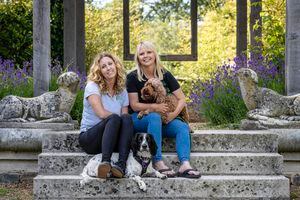
DOGS are often referred to as having a sixth sense, but people rarely consider what it is that gives them their superpower.
It is, of course, their incredible sense of smell that sets them apart from other species and gives them an ability that we as humans will never completely be able to understand.
For years, humans have employed dogs to assist us in a variety of roles, many of which have relied on a dog’s scenting ability. From police sniffer dogs to bomb disposal dogs, there are many different roles where canines have proved to be invaluable.
Their amazing ability has been in the spotlight recently, with Medication Detection Dogs UK completing a study showing the reliability of a canine’s snout when it comes to identifying if someone has contracted Covid-19, as well as a pet sniffer dog company’s appearance on the TV show Dragon’s Den.
More and more people are realising just how important scent and sniffing is to man’s best friend. Yet, it might come as a surprise to many of us who live with dogs in our lives just how much our pets know about us, the situations around them and others just by having a quick whiff of the chemicals surrounding them.
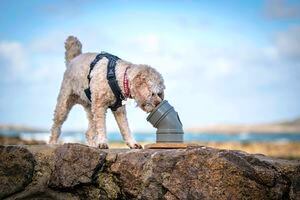
As Anna Brehaut, founder and owner of Canine Behaviour Guernsey, explains, it is something that is often overlooked.
‘I think most people know that dogs like to sniff and that we as humans can train them to detect scent, but people don’t necessarily think about or realise the exact extent of what they are capable of, or indeed just how important it is for any dog to be able to use their nose.
‘For a dog, the most natural thing for them to do is sniff. Their primary way of communication is through scent. When greeting another dog they are able to tell the sex, age, health status of the dog and much, much more by just sniffing them.
When on walks, they read messages left in the scent of the urine behind from other dogs and indeed they are able to smell what else has been in the vicinity.
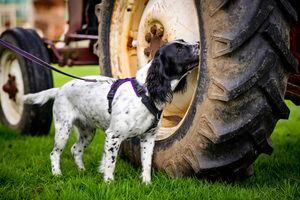
‘At home, dogs know how you’re feeling though smelling the chemical changes that your bodies produce. They smell when you are stressed. They smell when you are ill. Scent is their primary sense and they see the world through their nose.’
Anna and CBG volunteer trainer Sam Smillie have recently qualified as pet scent instructors with the World Scent Dog Association and have also achieved a City & Guilds approved qualification as scent handlers. Their passion for scent has led them to set up classes for pet dogs in the island, providing owners with the teaching to learn more about their dog’s nose and how they can provide their pet with an outlet to use that incredible natural skill.
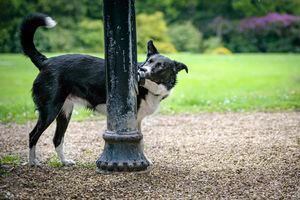
‘To put it into context, a human has between five and six million scent receptors in their nose,’ Anna continued.
‘A dog has around 220 million, with some scent hounds having up to 300 million. This statistic really helps us to understand why our dogs can smell so much more than us. I don’t think we will ever be able to truly understand the exact extent of what they know through their nose, but what we do know is that their ability is truly incredible.
‘We can train dogs to detect the odour of human disease, to detect illegal substances, to detect the presence of invasive species that we cannot see and we can even teach them to detect what might or might not be in our food. A dog’s nose really is an impressive organ.’
Due to the increased understanding in recent years, behaviour practitioners and dog professionals are using a dog’s natural talent to help pet dogs overcome any problems they might have.
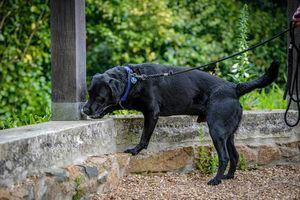
Giving dogs an outlet to use their nose helps to keep them calm and can improve mental health outcomes for our four-legged friends, Anna said.
‘It’s really great to see the difference that scentwork and detection training can make to a dog’s quality of life. I often see dogs who are behaving in such and such a way because they are frustrated, anxious and often misunderstood. Allowing these dogs to start working with what nature intended really does help to improve their mental stimulation, quality of life and therefore has a positive effect on their behaviour.’
Anna and Sam have trained their own pet dogs, including cockapoos, spaniels and Tibetan terriers, to detect scents such as Kong, which is a type of dog toy, non-toxic gun oil, catnip and human scent. They have also seen a range of different breeds in their classes, including miniature schnauzers, labradors, rescues, border collies and more. And as Sam said, any dog can do it.
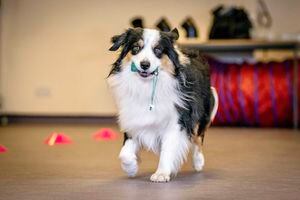
‘All breeds are capable of learning scentwork and detection,’ she said.
‘When you go into the science behind it, it is really fascinating.
‘As a dog is so reliant on their nose, the nose itself has evolved to be totally efficient. The soft tissue inside the nasal area can accommodate both air and scent yet still differentiate between the two sufficiently enough for the dog to recognise the tiniest of scent particles.
‘What has been really interesting to see is how the different breeds learn in slightly different ways. Training different breeds while we were studying last year has helped us learn so much more and it means we can really adapt our teaching to suit everyone.’





